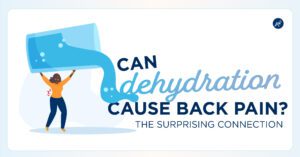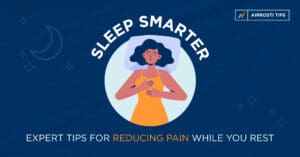So, we’ve seen them at one time or another in the gym or in the Airrosti offices. You know, the long, circular, white or black foam rollers. We know they must be beneficial, because so many people use them. You might have tried using one, only to be left scratching your head and wondering why you were rolling around the floor. But foam rolling can be very beneficial to your routine … if you know what you’re doing.
Why Should You Use A Foam Roller?
Let’s start with the physiological aspects (nerd alert) of foam rolling. It’s a form of self myofascial release therapy (SMRT) used to break down scar tissue and adhesions that form on soft tissue after repetitive use. “Myo” is Greek for “muscle” and “fascia” is a web of connective tissue found throughout the body. Myofascial release is stretching of the muscle and fascia.
We all have a pretty good idea as to what a muscle is, but I sometimes lose my audience when I mention fascia. To really understand the importance of foam rolling, we have to understand what fascia is and how it works. Fascia is the connective tissue surrounding our muscles, which as a whole is known as the myofascial unit. Picture a sandwich (the muscle) wrapped in saran wrap (the fascia). The saran wrap holds the sandwich together and they move as a unit. Since these two are interconnected, if we stretch our muscles, we stretch the fascia surrounding them. The same concept applies for injured muscles. If we damage or tear them, we have damaged and torn the fascia. Thus, we can’t “tear” into the sandwich (the muscle) without “tearing” through the saran wrap (the fascia).
So now you know if you tear muscles, you tear fascia. What you may not know is every time you work out, you are tearing muscle fibers. It’s nothing to be scared of as that’s how you build strength. However, both the muscle fibers and the fascia become tighter and shorter each time. Picture your body as a chain. When there is a kink (shortened muscle fibers and fascia) in the chain, it causes stress in other parts of the chain. Will a kinked chain still be able to perform its function of, let’s say, holding up a large speaker over a football stadium? Sure! But over time, the added stress on the chain from that kink will cause the chain to break, dropping the speaker onto the stands. Our body is durable, but it’s not invincible. Breakdown happens when we get out of shape and develop more “kinks,” making us more prone to injuries.
The Benefits of Using a Foam Roller
Foam rolling alleviates these kinks by breaking down scar tissue and the adhesions that form on the soft tissue after repetitive use. These scar tissues and adhesions are formed from the micro tears we create daily from not only high impact exercise/activity, but also our lifestyles and daily habits outside of the gym or sporting arena. The micro tears eventually build up onto each other and lead to bigger problems. Imagine your torn muscles and fascia (after tightening up) as dough balls and the foam roller as your rolling pin. We smooth out dough balls to form wonderful, light pastries. Similarly, the foam roller stretches and lengthens your distorted myofascial units back into a functional state so that your body works more efficiently.
If you can be consistent with it, foam rolling not only prevents these “dough balls” from hindering your fitness or lifestyle goals but also helps with the following:
- Relieving pain
- Increasing range of motion
- Increasing long-term flexibility
- Preventing injury
- Improving strength
Moral of the story? Start to incorporate foam rolling into your daily regimen. Come in early and knock it out before a workout. Long day at work? Get on that roller and release the stress your body is carrying. It may not look pretty, and it’s definitely not one of the most flattering things to do in public! But if you’re looking to see significant gains in your fitness routine, you won’t realize those goals until you work out your kinks, lengthen those dough balls, and finally gain the flexibility needed to realize your body’s full potential.
This article was written by Leigh LeGare, Certified Recovery Specialist, Airrosti Rehab Centers









